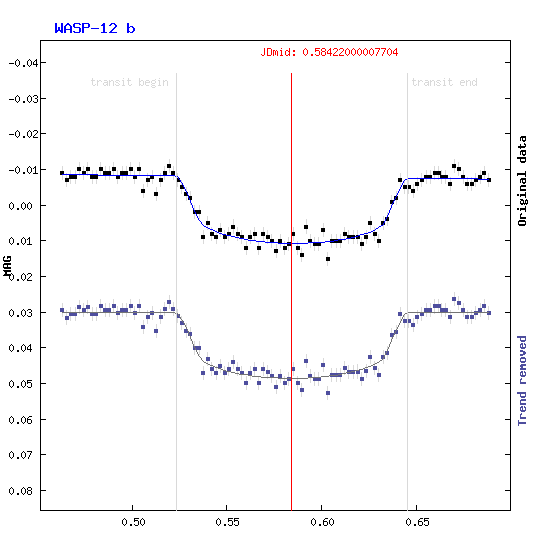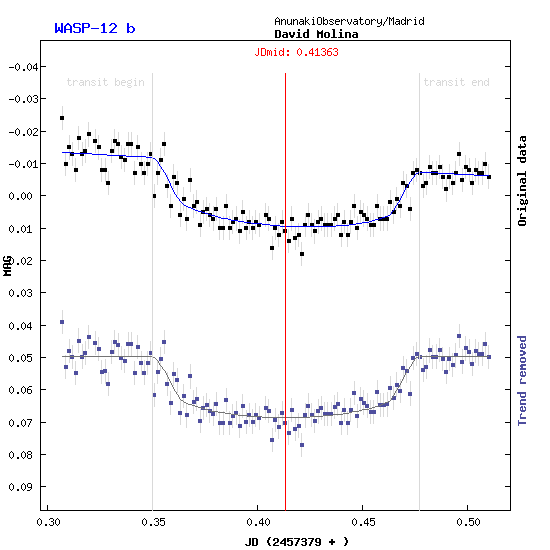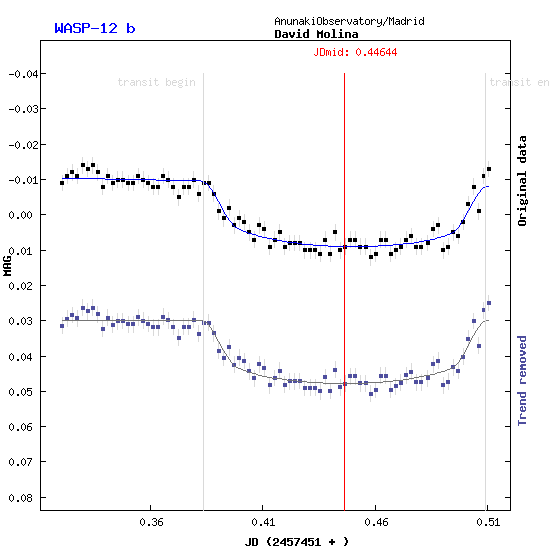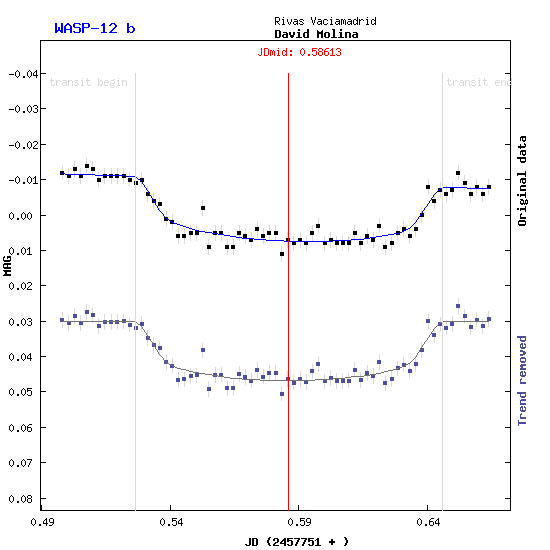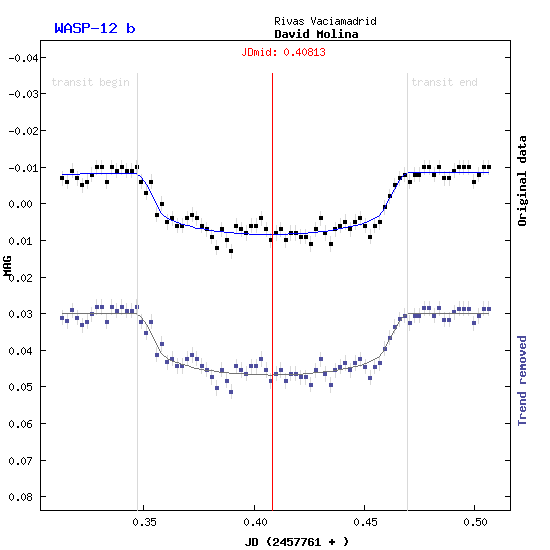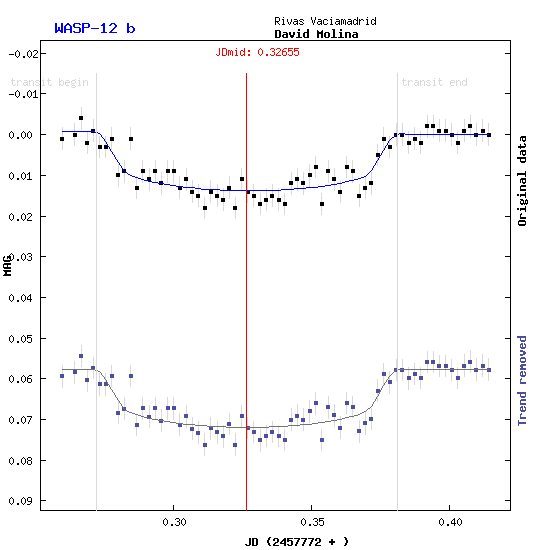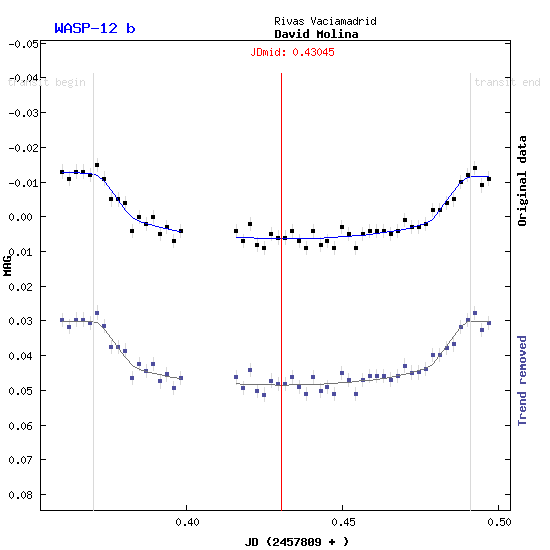WASP-12b is an extrasolar planet that orbits the star WASP-12, a star of apparent magnitude 11.7, spectral type G0 and that has a temperature in its photosphere of 5900 K. It is located about 870 light years away. Its radius and mass indicate that it is possibly a gas giant, similar to Jupiter, although due to its proximity to its star (2.1% of the distance from the Earth to the Sun), it would be classified as a hot Jupiter.
In October 2008 it was reported that the planet had a temperature of 2250 degrees Celsius and that it was, until then, the hottest planet ever found, according to NewScientist.com.1According
to calculations, the tidal forces have such a magnitude that they would make the shape of this planet look more like a rugby ball than a sphere. On the other hand, WASP-12b is losing mass, absorbed by its star, at a rate of 6 billion tons per second. At this rate the planet will be destroyed in a period of 10 million years, an instant on the astronomical scale. The material torn from the planet falls towards its star forming a spiral, inside which would also be another small extra solar planet, with a dimension probably larger than Earth.
This is the first known exoplanet that is made up of more carbon than oxygen. It is a gas giant (like Jupiter) composed mainly of hydrogen, located 1200 light-years away. Its size is thousands of times smaller than the star it orbits.
The discovery, made by a team of astronomers from the United States and the United Kingdom, led by Nikku Madhusudhan, was made possible by detecting the planet’s thermal radiation, using the Spitzer Space Telescope.
Theoretically, this extrasolar planet would have predominantly diamond and graphite rocks. On the other hand, both water and land would be a scarce resource in it. Doctor Madhusudhan’s guess is that these types of planets could be quite common.
https://arxiv.org/abs/1708.00693







